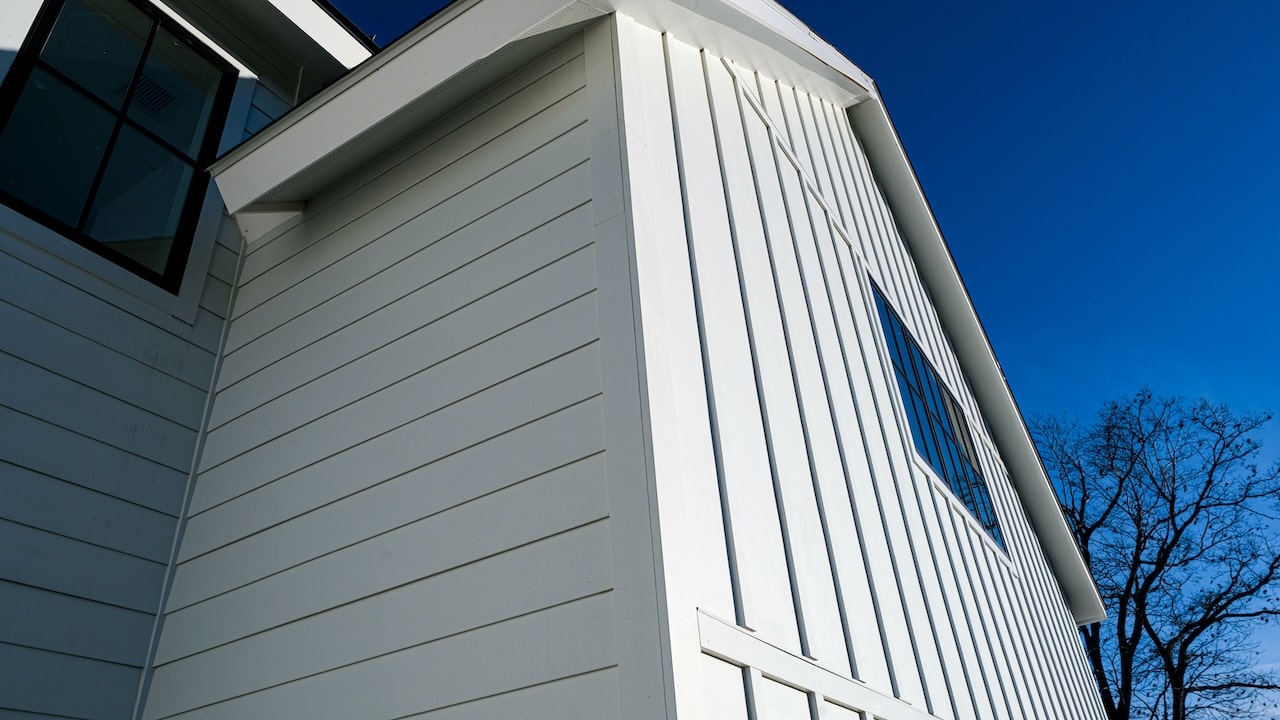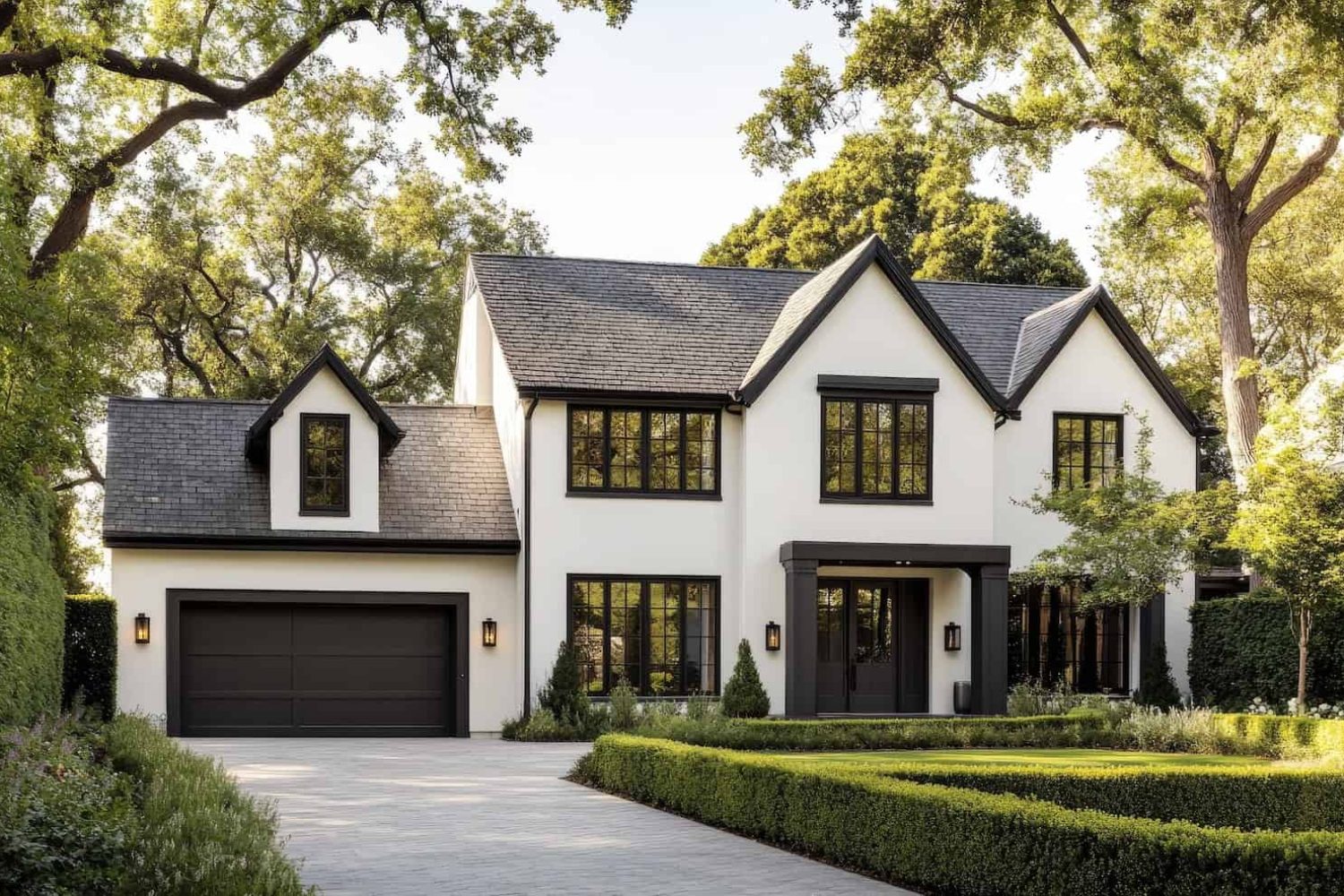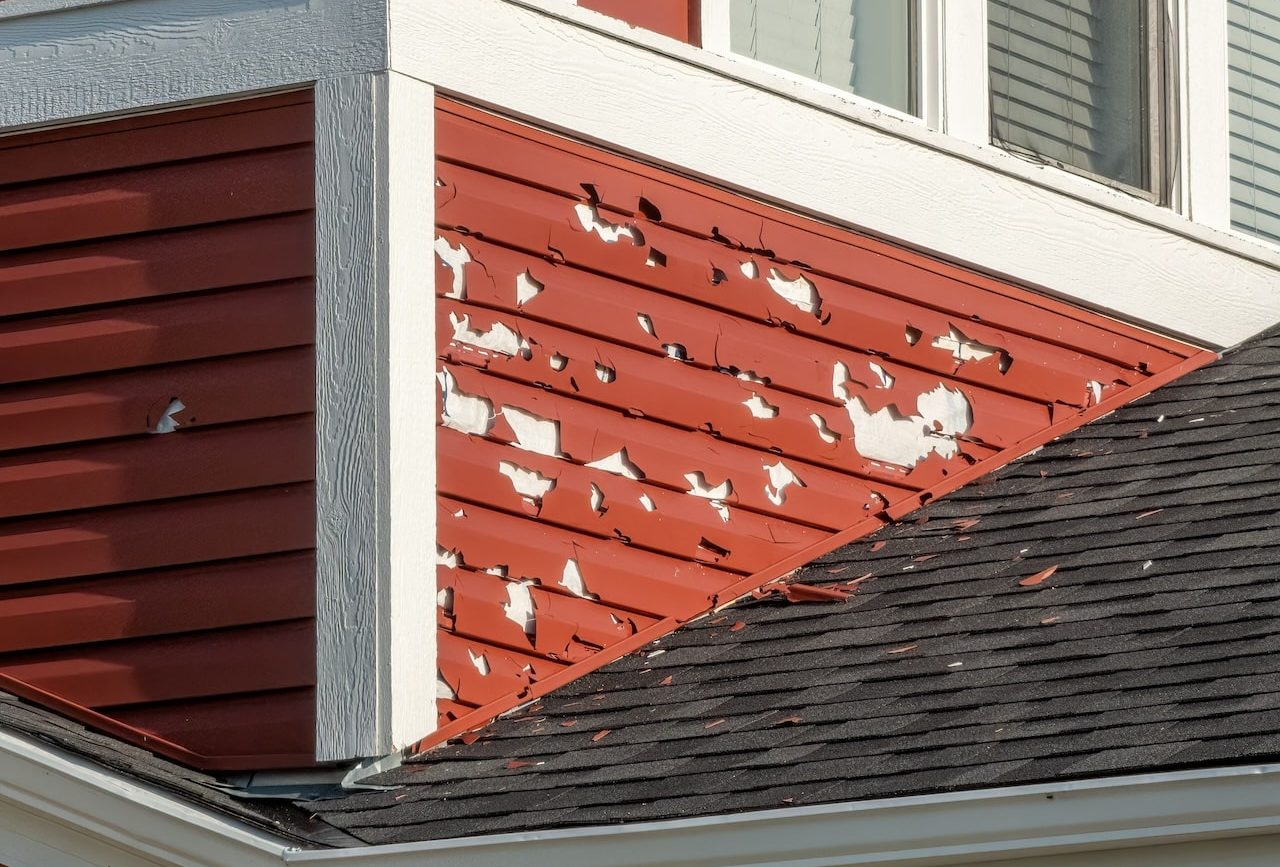Maintaining your home’s exterior, especially your siding, takes time, effort, and money, especially if you live in a harsher climate, like Minnesota. As a busy homeowner this upkeep can become a pain. Investing in maintenance free siding can help you lower this pain factor with a more durable product that performs and looks better for longer.
Let’s take a look at what siding products work best as low fuss exteriors, even in climates that experience extreme weather conditions. You can then contact us when you’re ready to install a low-demand siding solution.
The Real Meaning of “Maintenance Free” Siding
As there is not a siding material that is truly no maintenance, what we are really looking at with maintenance free siding is an exterior covering that is designed to be weather resistant, durable, and long lasting without requiring a lot of regular upkeep, like cleaning, painting, staining, or sealing. Although there is no such thing as zero upkeep, these lower maintenance materials require minimal upkeep when compared to traditional wood siding, which can save you time and money in the long run.
Top Low Maintenance Siding Materials
The purpose of siding is to protect your home from the elements such as rain, wind, temperature extremes, snow, and ice. It not only adds to your home’s exterior beauty but also helps with insulation and acts as a shield against the weather. Choosing a material that works in your climate conditions is a strong factor when looking at your options.
Whether you are looking for siding that doesn’t fade or siding that resists mold or some other property that will increase your siding lifespan, maintenance-free exterior cladding can offer you a solution that is right for your home. Let’s compare and contrast long lasting siding materials that have the lowest maintenance, including: vinyl, metal, fiber cement, and composite.
 Vinyl Siding
Vinyl Siding
Vinyl siding is popular and is reported to cover up to 25 percent of homes in the U.S. Some of the top vinyl siding benefits are its combination of affordability with durability, its easy installation, and wide range of colors and styles. It is known as a no-paint siding that will retain its color, which is embedded throughout the material, unlike wood, where the color is only painted on the surface.
Vinyl however is not a completely fade-resistant siding, as it will fade over time. There are some fade resistant vinyl options that add titanium oxide, but this also adds to the overall cost. Vinyl is also less durable than other more expensive low-maintenance siding materials. You can expect it to last about 20 to 40 years.
Metal Siding
Metal siding for homes has become more popular in recent years as metal siding products on the market that fit home use and aesthetics have expanded. Metal siding is extremely durable, fire and impact resistant, and performs well in harsh weather. It also does not require painting or sealing, making it a low maintenance option.
Coated steel is treated to be a rust-proof siding option that can last up to 70 years, while aluminum is a naturally corrosion resistant metal siding that can last between 40 to 50 years, as it can dent more easily than steel.
Metal siding does have a higher upfront cost and can be damaged by sharp or heavy objects. It also requires a more complex installation process and if not properly installed with the right underlayment it can be noisy in rain or hail.
Fiber Cement Siding
Fiber cement is a highly durable, impact and weather resistant siding that can last more than 50 years. It performs substantially well in high winds and extreme weather conditions without deteriorating. Another added bonus is that it is also an insect and termite resistant siding with good insulation properties, which can add to your home’s energy efficiency.
Fiber cement does require a bit more maintenance when compared to vinyl. You need to regularly clean and seal it, and do an occasional paint job to maintain its appearance. It also comes with a higher upfront cost than most other low maintenance materials, which can be offset over time with its longer lifespan.
Read More: Vinyl vs. Fiber Cement Siding: Which is Right for Your Home?
Composite Siding Materials
Composite cladding is a manufactured siding material that incorporates advanced technology to combine wood fiber, plastic, and special resins to make a product that mimics traditional wood, but is lightweight, durable, and performs better under harsh weather conditions. These materials come in a variety of styles, colors, and finishes, adding aesthetic appeal to any style home while also offering superior protection and reduced maintenance. They are built to resist rot, insects, and moisture, and can last between 30 to 50 years. It performs well in harsh climates and is thicker than vinyl with higher insulation properties. This can help lower your energy costs.
Composite materials have higher upfront costs compared to vinyl and require longer and more skilled installation. It can also require repainting and resealing every few years.
Curious what suits your house best? We can help you decide.
Siding Maintenance Tips: How to Clean and Preserve Your Siding
Although the above options are considered lower maintenance siding options, proper care will always support your siding durability.
Vinyl requires routine cleaning and rinsing along with regular inspections to check for damages. Cracks and holes along with any mold or mildew should be addressed quickly to avoid further damage. You should also avoid harsh chemicals and excessive scrubbing or power washing.
Metal requires annual cleaning with soap and water while avoiding harsh chemicals and high-pressure washing. Check for rust or dents at least twice a year. Address minor dent repairs and rust spots quickly.
Fiber cement and composite siding requires yearly cleaning with a hose, brush, and mild soap. Pressure and power washers should be avoided. Inspect siding annually to look for cracking or chipping and use the manufacturers touch-up kit for repairs.
With all siding, maintain your gutters, cutback overhanging trees, and trim bushes around your home’s parameter. This will help prevent scratches, debris, and water damage. You should also periodically inspect the seals around your doors, windows, and other openings.
Read More: Why Hardie Board Siding is a Top Choice for Homeowners
Performance in Extreme Weather
If you live in a harsher climate, one that experiences extreme weather conditions, much like in Minnesota, keeping the exterior of your home looking good is more difficult, simply because your siding is exposed to a harsher environment.
In areas that experience snow, ice, high winds, extreme temperatures, and freeze/thaw cycles weatherproof siding is a must have. Insulated siding is also top on the list as it will serve to further protect your home and increase your home’s energy efficiency, lowering your energy costs. You want to find a siding that will resist warping and maintain its longevity despite the harsh climate.
Fiber cement and composite materials perform well in these northern climate conditions, as does higher end vinyl, yet not quite as well. No matter the material though, proper installation, especially of your flashing and ventilation is key to extending your siding’s lifespan under extreme weather.
Warranties and Protective Guarantees: What to Look for
Siding comes with two types of warranties, manufacturer’s warranty and workmanship warranty. Manufactures siding with a lifetime warranty or a set term will cover cracking, chipping, or fading caused by flaws in the actual manufacturing of the product. A workmanship warranty will cover a shorter time frame, typically around five years, and covers installation errors.
Damage from natural disasters, neglect, accidents, or improper installation are usually not covered by a manufacturers’ warranty. Make sure to check the fine print, as always, on your warranty to know what is covered and how, if the warranty is transferrable if you sell to a new owner, or if it requires a certified installation.
Common Issue to Look For
Identifying siding problems early can be the difference between repairs and a full replacement. Annual inspections and periodic checks can help discover issues that can be addressed before they grow bigger and costlier.
Common siding issues include:
- Chipping, cracking, or peeling
- Warping and buckling
- Moisture buildup, mold, mildew, or rot
- Pest infestation
- Color fading
- Loose or missing panels
- Damage to siding accessories, such as fasteners
If you discover an issue that is larger than something you can repair quickly and easily, call a professional. You do not want the problem to grow bigger by not properly addressing it. You may also find that the problem is not only on the surface but extends to the underlayment of your siding as well. This may then require a full siding replacement.
Have you spotted a crack or fade in your siding? Summit Construction Group can inspect it for you.
Cost Comparison and ROI
Some maintenance free siding options, such as fiber board and metal, come with a higher upfront siding installation cost, both for materials and more complex installation, than either vinyl or traditional wood siding options. However, these upfront costs can often be offset by the lifetime cost of installing a more durable, long lasting product. Increased energy efficiency, lower maintenance costs over time, and the long-term value of your home can all contribute to a higher ROI.
Summit Construction Group: A Professional Helping Hand
If you are looking to invest in the longevity and durability of maintenance free siding options Summit Construction Group specializes in high-quality exterior installations and our professional installers are certified in many high-end products.
Maintenance free siding can be an investment in your home’s exterior curb appeal and protection against harsh weather, moisture, pests, fire, and impact damage. Contact Summit for a free siding quote and consultation today to discover the best maintenance free siding options for your home.
Read More: The Ultimate Guide to Siding Installation: What Homeowners Should Know
FAQ
What siding materials require the least maintenance?
Vinyl, fiber cement, metal and composite materials are all considered low maintenance.
How often should low maintenance siding be cleaned?
Annually – low maintenance siding should typically be cleaned once a year.
Are maintenance free siding materials more expensive?
Vinyl is the least expensive maintenance free material, while metal, fiber cement, and composite come with higher upfront costs.
Can I repair damage on low maintenance siding myself?
Minor repairs can be done as DIY projects, but it is important to have a professional tackle larger jobs.
Does maintenance free siding reduce home value?
No, but it can raise your home value with increased curb appeal, energy efficiency, and lower maintenance costs.



